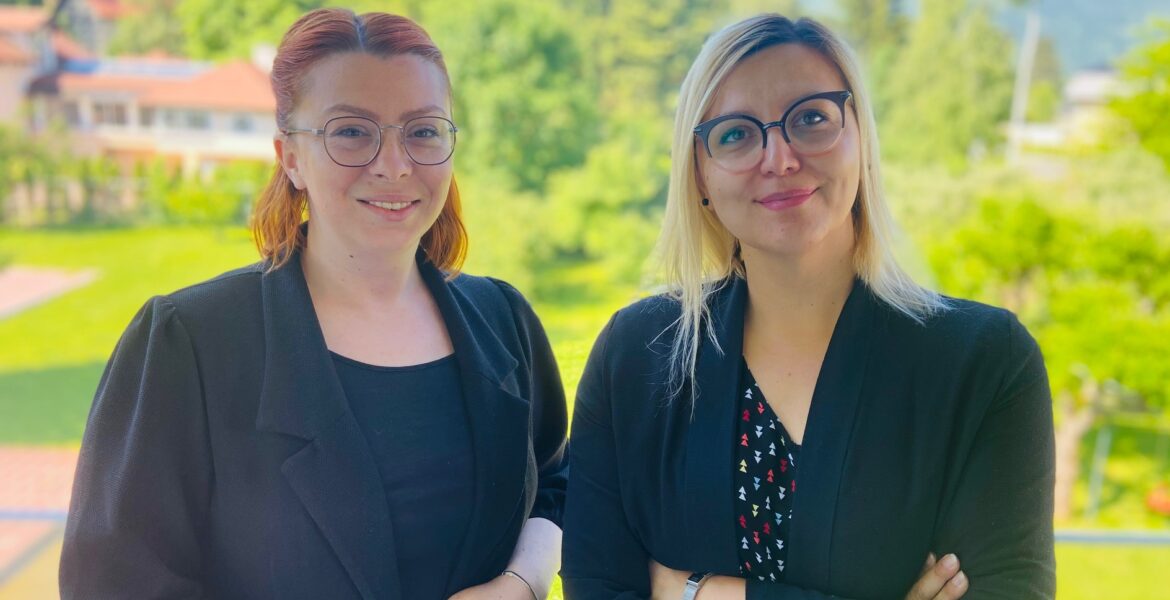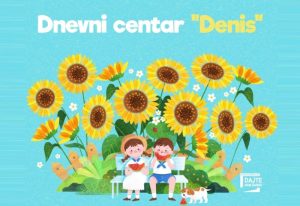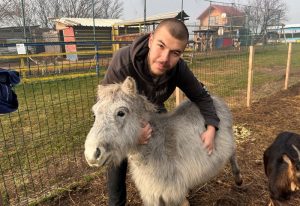In the last few years, we have seen that the movements of young people from Bosnia and Herzegovina (BiH) are gaining serious momentum, and we have an equally serious arrival of young people, especially young men, from other countries in BiH. Although mass migrations and brain drain belong to a separate form of human mobility, the reasons for all types of mobility are different and equal at the same time. Namely, both young people from BiH and migrants coming to BiH have almost the same goal – to live better. Although such youth movements are not part of the mobility program, they are certainly a reason to talk about mobility more and often, and about all its aspects.
Authors: Katarina Vučković and Jasmina Banjalučkić
If we question mobility and migration from the perspective of migrants through a sociological approach, we notice the connection between the concept of migration and the concept of mobility, because migration itself includes movement. What we need to distinguish is the fact that migration as we recognize it today, even in BiH, is not without restrictions, which is best seen in the attitude towards migrants.
What, then, is the difference between migration, youth departure and youth mobility, and how has the latter become popular and important among young people? Or, why should it be important for both the youth and the authorities in BiH?
What exactly is youth mobility?
The term youth mobility became very popular in the 21st century in Europe when the European Union decided to invest money and create programs that enable social integration of young people, first, second and third generation migrants in Western Europe, but also provide youth from all over Europe to learn, make contacts and network with their peers regardless of what part of Europe they come from and whether the country they come from is an EU member or not.
These programs define mobility as the ability of young people to move between different places outside their country and within it, with the aim of personal and professional development, gaining autonomy and creating new values in their home place. Young people achieve this on their own or through one of the offered programs.
Given that we are talking about youth mobility, it is important to understand that there are different forms of mobility. Here we can list the most common reasons for traveling, and these are: work, education, vacation, etc. What we focus on is mobility that results in learning and development. We learn about different cultures, traditions, nature, economy, politics and everything that gives us more information and knowledge that we return to the community we come from. Undoubtedly, when we talk about mobility, we are also talking about education, both formal and non-formal.
To ensure a common understanding of what non-formal education is, we need to understand it as a planned, structured education program that aims to improve a range of skills outside of formal education. In the context of young people, it happens mainly in places such as youth organizations, cultural societies, sports clubs, groups where young people gather, with a purpose to implement certain activities, projects and initiatives together. Unlike formal education, non-formal education is still not sufficiently recognized, especially not in Bosnia and Herzegovina. It is, above all, focused on the needs of participants, but also on the acquisition of life skills and preparation for active participation in society. Through its work, the European Youth Foundation speaks and presents the fact that formal, non-formal and informal education are complementary and supportive elements of the lifelong learning process and it is as such a part of the mobility program. All forms and programs of youth mobility include planned non-formal education.
Youth mobility takes place through different programs, but we can divide it into several categories:
- Mobility of young people through educational exchanges of students
- Youth mobility through international volunteering
- Youth mobility in employment
- Youth mobility through vocational education and further training
- Youth mobility through short-term and long-term non-formal education programs
- Excursions and trips
- Virtual mobility of young people
Why are youth mobility programs important?
Changing the place of residence for a few days, such as a shorter vacation, makes us different, more ready for everyday challenges and strengthens relationships with others and with ourselves. Imagine now that you are traveling longer and with a conscious educational goal of a student exchange, youth camp or seminar. How do you return home and why is it important to you as an individual, your friends and peers and how the “new” you affect the world around you? Learning and personal development begins the moment the young, and even us a little older, get out of the comfort zone. Going and staying for a longer or shorter period with a specific educational goal offers young people just that: getting out of the comfort zone, the opportunity to better understand themselves, their peers, learn something new, gain new knowledge, values, approaches and skills for everyday life. Even when we give young people the opportunity to move within the same country, there is cultural and social connection and learning.
In each of these program models, especially in long-term programs with support and mentoring, young people will return empowered for more independent action in civil society, their environment, and more willing to support their peers and community development.
At the individual level, mobility is important to us in order to see the opportunities that are around us, which we are not necessarily aware of when we are only in our community. We gain new knowledge and experience at various seminars, trainings, conferences, etc. It certainly makes us much more aware of everything that is happening around us, but also of how much we ourselves can contribute to the changes we advocate or want to happen. Very often these skills are recognized by organizations, teachers, parents and even employers as important for the adequate and efficient functioning of a young person, and, for example, support greater competitiveness in the labor market.
Mobility simply provides an opportunity for a young person to be outside the comfort zone and acquire new skills, knowledge and insights that, precisely because of what they have experienced for a long time, if not permanently, remain as a lesson they apply throughout life.
If we think of youth groups that are formal like youth associations or informal groups that have a common goal, then for them mobility is an opportunity for further training, strengthening the capacity of a group that becomes more ready to respond to challenges in the community and society, be more active. For them, mobility also means networking and cooperation with other groups that have similar or the same goals, which leads us to a stronger organization of young people where their voice becomes significantly stronger.
All this, the mobility of both individuals and groups, has a significant impact on society itself. It is primarily beneficial for the local community from which or to which young people come or return. Initiatives and activities carried out by youth groups bring not only new content but also change the awareness of citizens, strengthen the relationship between young people and decision makers, improve cooperation with the private sector and offer citizens new opportunities to learn and develop their skills. So, if we talk about mobility, it is necessary to approach it in a holistic way and take into account all stakeholders, opportunities and benefits, and see how much impact it has on both the individual and the group and society as a whole.
Youth mobility programs
Youth mobility programs have already made great strides in the individual lives of young people around the world, even for a number of young people from Bosnia and Herzegovina. Although young people from Bosnia and Herzegovina can fully or partially use programs such as Erasmus Plus or the European Solidarity Corps, there are also individual programs that organizations, institutions and young people themselves can use to have the opportunity to leave BiH for a shorter period. It is a series of programs for students offered by international organizations, foundations and embassies. Opportunities for scholarships for a period of higher education outside BiH are especially emphasized here.
The benefits that youth groups have from mobility in Bosnia and Herzegovina can be measured through numerous youth exchanges, but also joint initiatives and projects of young people in the field of dealing with the past, better policies towards young people and the like. Here we can single out a number of youth associations and associations working with young people, which through mobility and networking have achieved significant results in their work such as the Youth Initiative for Human Rights BiH, Youth for Peace, Zdravo da ste, PRONI Center, Youth Council of FBiH, NARKO NE, Schüler Helfen Leben, Svitac and many others. Some of them are run entirely by young people, and some create their activities for young people. In general, mobility and programs designed to support mobility have enabled these associations to develop and improve the quality of their work with young people, but also provide young people with opportunities for growth and development in BiH and beyond.
Although the number of programs through which young people from other countries can come to volunteer in BiH is also quite high, programs implemented by the Regional Youth Cooperation Office (RYCO), WeltWaerts, work and summer camps, platforms like lovevolunteers still lack opportunities for the mobility of young entrepreneurs, both professionals and young professionals, and so-called job shadowing (learning through observing examples of good practice in a business environment) for BiH youth.
Youth and mobility in Bosnia and Herzegovina
Whenever we talk about the mobility of young people, a song by Zdravko Čolić comes to mind, which says: “Trains go during the day, at night …” and we realize again that in Bosnia and Herzegovina, buses do not go during the day, at night, and that not all passengers are on board. One of the important elements of mobility is the quality of the infrastructure that enables it, which are roads and the availability of public transport. According to the data of the Agency for Statistics of Bosnia and Herzegovina, the latest available data, the length of the railway in Bosnia and Herzegovina decreased by 9 km from 2013 to 2018 and in 2018 it was 1,018 km, and the length of road traffic is 10,158 km. The length of road traffic was increased by 1,600 km from 2013 to 2018. Although we often hear about investments in road infrastructure, these data are not encouraging. If we add that in BiH most local self-government units are not connected by public transport with neighboring communities, and connection between the entities is even worse, then we can rightly say that the availability of means of transport is limited. If you go from Ključ to Orašje, it is necessary to change at least three different buses and you will probably not arrive to your destination in one day.
When we look at the road conditions, we see that the conditions for mobility of citizens and even young people in Bosnia and Herzegovina are not met, which is just one of the reasons why we still hear stories that young people from Banja Luka have never been to Tuzla or that young people from Sarajevo have never been to Doboj. Back in 2008, when the only comprehensive analysis of the needs and problems of young people in BiH was done, Youth needs a youth policy. The data show that in the last 12 months 78% of young people (81% from FBiH and 74% from RS) traveled to another city, and in most cases within his/her entity. Thus, young people from FBiH traveled to RS in only 12% of cases, while 33% of young people from RS traveled to FBiH. How different the percentages are in 2021 and whether they are different, we have to wait for the Analysis of the needs and problems of young people in BiH, conducted by the Institute for Youth Development KULT which will soon be available to the public.
No level of government in Bosnia and Herzegovina has created programs to systematically support youth mobility. The only bright cases are several local self-government units that have created a fund for youth mobility, which supports the departure of young people to events of educational and cultural content. The State of Bosnia and Herzegovina allocates funds for the Erasmus+ program as well as for the work of the Regional Youth Cooperation Office in the Western Balkans. Erasmus+ and RYCO provide opportunities for young people to travel and learn, but this is purely youth-oriented mobility between different countries. What is missing in Bosnia and Herzegovina is precisely the systemic support for youth mobility within the country.
We note that we do not only refer to non-formal and informal education but also formal. Youth exchanges between young people from different communities in Bosnia and Herzegovina occur only if international organizations and very rarely domestic foundations and associations financially support the implementation of such activities. Local self-government units and other levels of government almost never support mobility within BiH, so it is not unusual for us to hear that young people and children do not go on excursions to some parts of BiH, or that we consider meetings of students from all faculties in BiH to be a great success. And this is very often initiated by young people themselves, and for that they need more social and systemic support.
The pattern of behavior in the mobility of a country, especially its youth, is influenced by the historical-cultural context, but also by the current socio-economic aspect. What people usually say in BiH is that we do not like to move much, although we have the popular “one place/city will not make me be still”, it seems to us that we are just a restless spirit, but not ready to travel and stay somewhere because of experience, desire to grow and by returning with new values for our society. Here we exclude the departure of young people from BiH, because that is another form of mobility.
Meša Selimović said that a person is not a tree and being attached is his/her misfortune, it takes away his/her courage, diminishes his/her security. A good part of young people do not have the opportunity and encouragement to dare and become aware of courage, and almost all institutions in charge of youth need the same incentive to create programs for youth mobility, connect more and get to know each other more clearly and use the importance of youth mobility for society. Because young people who have a new experience, bring a new look to the place they are from.





